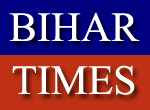|
01/08/2013
Hindu-CNN-IBN-CSDS study: But surveys are not elections
|
Though the latest survey of Hindu-CNN-IBN-Centre for the Study of Developing Societies (CSDS) reveals that the ruling Janata Dal (United) in Bihar, with 25 per centage point, still has the largest vote share, yet of all the three major parties of the state it is in the most vulnerable position so far winning election is concerned. The survey says that the RJD’s vote-share has jumped from 19 to 24 per cent while that of the BJP from 14 to 22 per cent. The increase in JD(U)’s is marginal––from 24 to 25. This is largely attributed to the fact that it may contest in all the 40 Lok Sabha seats of the state in comparison to 25 last time. But there is some difference between a survey and an actual election. What is of concern for the Janata Dal (United) is that after the split with the BJP it has been left without any ‘political’ caste as well as committed cadres. In Bihar some castes are much more political than others. For example, Bhumihars are considered as a politically conscious and somewhat militant caste. When the BJP and JD(U) were together Bhumihars, numerically among the strongest upper castes of the state, were solidly behind the alliance. After the split they are a divided lot. Though Nitish is doing his level best to promote leaders belonging to this caste like his education minister, P K Shahi, water resources department minister, Vijay Chaudhary and former Bihar JD (U) chief Lallan Singh (who briefly became a noted critic of chief minister), Bhumihars, as such, are upset over his move to break relationship with the saffron party. All the top BJP leaders, who have been extremely critical of the CM, such as former Union Health Minister, Dr C P Thakur, and former ministers in the Nitish cabinet, Giriraj Singh and Chandra Mohan Rai are Bhumihars. The former deputy chief minister, Sushil Kumar Modi, and current state party chief, Mangal Pandey, turned against the chief minister much later. Rajputs, who are another numerically stong upper castes too seem to be divided lot now, with some of them even pitching for RJD. This was indicated in the recently held by-poll for Maharajganj Lok Sabha seat. The other two numerically less strong upper castes–– Brahmins and Kayasthas––too are heavily inclined towards the BJP, though they may be not so aggressive as Bhumihars and even Rajputs. Bharatiya Janata Party has yet another advantage. Since it is a cadre-based party one can find its workers in almost all the villages of the state. This is not the case with the JD(U). The BJP and RJD appear more stronger in translating the supporters into real voters on the day of voting. This is very significant aspect and need not be ignored. The recent defeat of Janata Dal (United) in the Maharajganj by-election is a pointer to this fact. None else but the party candidate, P K Shahi, conceded after the defeat on June 5 last that he lost because in 400 booths––almost one-third of the total––there was no party worker to man the booth. This was simply because the BJP cadres did not back him as Nitish was on offensive against Narendra Modi. Though the split took place a few days later on June 16 the BJP tried to teach JD(U) a lesson by virtually dissociating itself from the by-poll. The Maharajganj defeat is so much talked about because it was one of the few Lok Sabha seats in Bihar in which the upper castes form a substantial percentage of voters, yet the RJD’s Rajput candidate, Prabhunath Singh won by a handsome margin of 1.35 lakh votes. This was so in spite of the presence of Congress party’s Rajput candidate in the fray. Even during the high time of polarized Mandal politics of 1990s upper caste candidates won from Maharajganj. In 1989 the former prime minister Chandrashekar contested from both Ballia in UP and Maharajganj in Bihar. He later retained Ballia. It was only in 2009 that RJD’s Rajput candidate Umashankar Singh could win defeating the same Prabhunath Singh, who was then in Janata Dal (United), by a slender margin of 2,800 votes. This about 50 times increase in RJD’s winning margin––from 2,800 to 1.35 lakh in the constituency with a sizeable upper caste population––speaks a lot. Nitish relies heavily on Koeri-Kurmi, Most Backward Castes and Mahadalits, but they are not so politically aggressive. Kurmi, the caste to which Nitish belongs, is too small in comparison to others. But the problem with Mahadalits and MBCs is that they are too fragmented and divided groups. Minus Paswans, the Mahadalits form 12 per cent of population. But they are divided into 21 different sub-castes. Similarly, the MBCs, who form something between 25 and 30 per cent are divided into over 100 castes. Some of these castes are traditionally BJP voters so are the Banias (trading community). The latter may not be as strong as Yadavs or Bhumihars yet they are the one who can raise fund for any party. |

